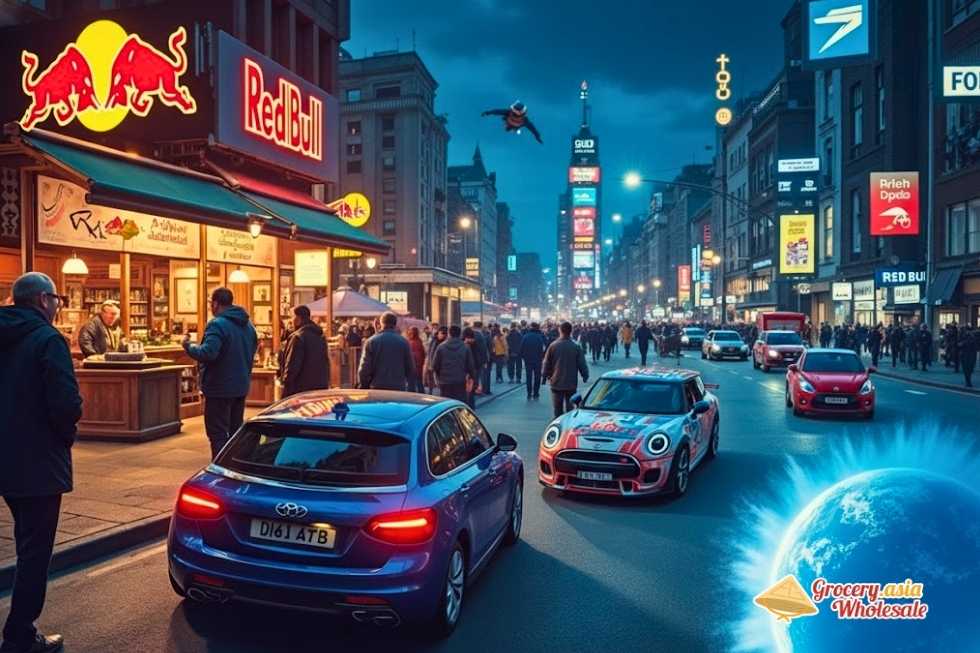No products in the cart.
Beverages News, Energy Drinks, Red Bull Energy Drink
When Did Red Bull Energy Drink Come Out Globally
Red Bull’s journey from a Thai energy tonic to a global energy drink empire is a fascinating story of innovation, marketing, and international expansion that redefined an entire beverage category.
Table of Contents
Key Takeaways
- Red Bull originated from a Thai energy drink called Krating Daeng, created in the 1970s primarily for blue-collar workers, and later adapted for Western markets through a strategic partnership established in 1984.
- The global Red Bull formula officially launched on April 1, 1987, in Austria, creating an entirely new “energy drink” product category which had previously been confined largely to Asia.
- International expansion began early, starting with Slovenia and Hungary in 1992, followed by major markets like Germany in 1994, the UK in 1995, and the United States in 1997.
- Red Bull achieved impressive global reach, selling over 12.138 billion cans worldwide in 2023, and capturing approximately 43% market share in the highly competitive U.S. energy drink market.
- The brand has evolved from a single energy drink into a diverse product portfolio, offering options like sugar-free and flavored editions, along with engaging in lifestyle branding through extreme sports, sponsorships, and media projects such as the Red Bull Media House.
From Energy Boost in Thailand to Global Phenomenon
I find the Red Bull story fascinating because it demonstrates how a local product can transform into a worldwide brand through smart adaptation and marketing. The journey begins in Thailand during the 1970s, where entrepreneur Chaleo Yoovidhya created an energy drink called Krating Daeng, which translates to “Red Gaur” in English.
The Thai Origins
Yoovidhya’s original formula wasn’t carbonated and targeted blue-collar workers who needed sustained energy throughout their demanding shifts. Laborers, truck drivers, and night-shift workers quickly embraced Krating Daeng for its proven effectiveness in combating fatigue. This non-carbonated beverage contained ingredients that delivered the energy boost these workers desperately needed during long hours of physical labor.
Austrian Discovery and Global Transformation
The pivotal moment came in 1982 when Austrian businessman Dietrich Mateschitz traveled to Bangkok on business. During his trip, he discovered Krating Daeng and experienced firsthand how effectively it countered jet lag and fatigue. Mateschitz immediately recognized the commercial potential for adapting this Thai energy drink for Western markets.
Two years later, in 1984, Mateschitz made his vision reality by partnering with Chaleo Yoovidhya to establish Red Bull GmbH. Each partner invested $500,000 and secured 49% ownership, while Yoovidhya’s son retained the remaining 2% stake. This partnership would prove to be one of the most successful business collaborations in beverage history.
The Western adaptation required several crucial modifications to appeal to different taste preferences and market expectations:
- Carbonation was added to create a fizzy sensation that Western consumers preferred.
- The sweetness level was reduced significantly, as the original Thai formula was much sweeter than what European and American palates typically enjoyed.
- A distinctive slim aluminum can design was introduced, which created instant brand recognition and set Red Bull apart from traditional soft drinks.
This innovative packaging wasn’t just aesthetic—it conveyed a sense of premium quality and portability, perfectly aligning with the active lifestyle that Red Bull’s launch would eventually target.
These strategic adaptations transformed a regional Thai energy drink into a product ready for global expansion. The partnership preserved the functional benefits that made Krating Daeng effective while creating a format that could succeed in completely different cultural and commercial environments. Today, this careful balance between honoring the original formula and adapting for new markets continues to influence how Red Bull operates across diverse international markets.
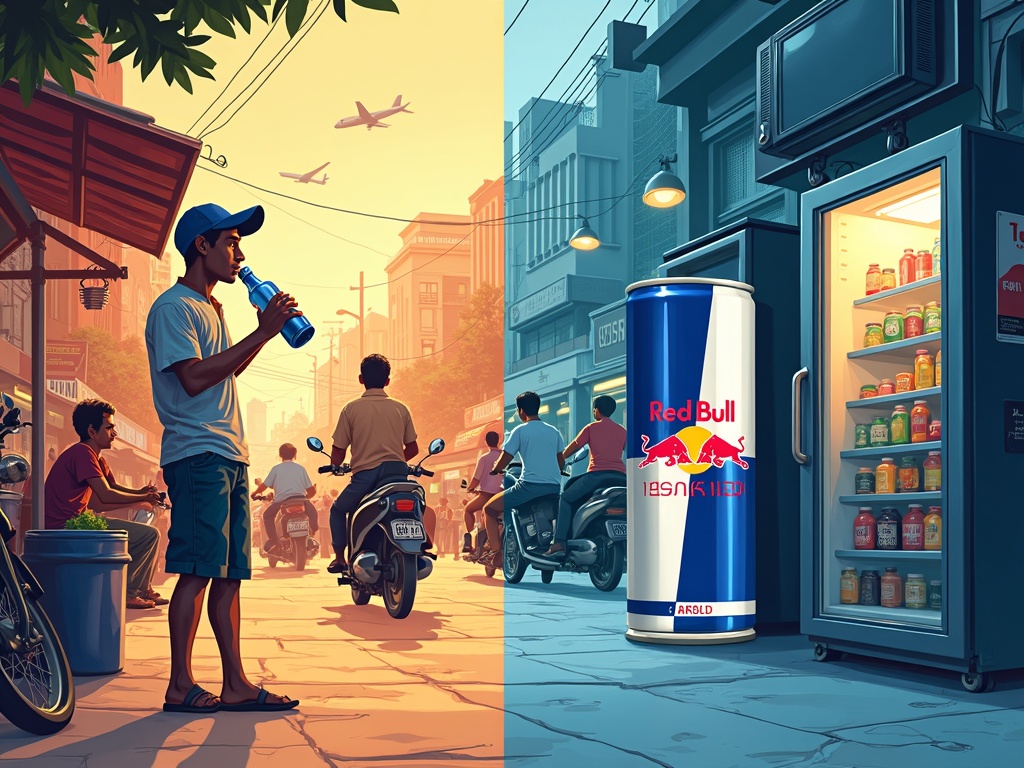
The Official Birth of Red Bull: Austria 1987
Red Bull officially launched on April 1, 1987, in Austria, marking the end of three years of intensive product refinement and market testing. This date represents more than just another beverage launch — it signified the creation of an entirely new product category that would reshape the global drinks industry.
The Launch That Changed Everything
The Austrian debut introduced the iconic slogan “Red Bull Gives You Wings” (Red Bull verleiht Flügel in German), emphasizing both physical and mental energy enhancement. This wasn’t accidental marketing speak; it represented a fundamental shift in how beverages could position themselves in consumers’ minds. The slogan immediately distinguished Red Bull from traditional soft drinks by promising functional benefits rather than just refreshment.
Initially, the drink faced considerable skepticism from both retailers and consumers. The unusual flavor profile, derived from its Thai origins, challenged European taste preferences. The distinctive small 250ml can stood out starkly against the larger formats dominating store shelves. Most challenging of all was the premium price point — roughly twice that of traditional soft drinks — which required consumers to reconsider their value perception of what a beverage could offer.
Creating the Energy Drink Category
Red Bull didn’t just sell a beverage; it created an entirely new product category that didn’t exist before 1987. This strategic positioning required extensive consumer education about what an “energy drink” actually was and why someone would need one. The company faced the unique challenge of building demand for a product type that had no established market presence outside of Asia.
The early years in Austria laid the foundation for a marketing revolution that focused on lifestyle and performance rather than traditional advertising approaches. Instead of competing directly with established cola brands or fruit juices, Red Bull carved out its own space by associating with:
- Extreme sports
- Late-night studying
- High-performance activities
This positioning strategy would later influence Red Bull’s global expansion efforts across multiple continents.
The Austrian launch proved that consumers were willing to pay premium prices for functional benefits when the product delivered on its promises. This validation became crucial for the brand’s confidence in international markets. The success also demonstrated that unconventional flavors could gain acceptance when paired with clear functional positioning and consistent messaging.
By establishing itself first in its home market, Red Bull could refine its distribution strategies, perfect its marketing approach, and build the operational expertise needed for larger-scale expansion. The Austrian foundation provided essential learnings about consumer behavior, retail partnerships, and brand positioning that would prove invaluable for future market entries.
The 1987 launch date remains significant because it marked the beginning of what would become a global phenomenon. When Red Bull eventually entered the US market in 1997, it carried with it a decade of proven success and refined marketing strategies developed during those crucial early Austrian years.
The product’s initial reception taught the company valuable lessons about market education and consumer adaptation. Rather than changing the formula to suit local tastes, Red Bull maintained its authentic character while adjusting its marketing message to help consumers understand the product’s value proposition. This approach would later inform expansion strategies in diverse markets, including partnerships with distributors in Vietnam and other emerging economies.
The April 1987 launch established Red Bull as more than just another beverage company — it positioned the brand as a lifestyle enabler and performance enhancer. This foundation proved so strong that the core positioning remains largely unchanged today, nearly four decades later.
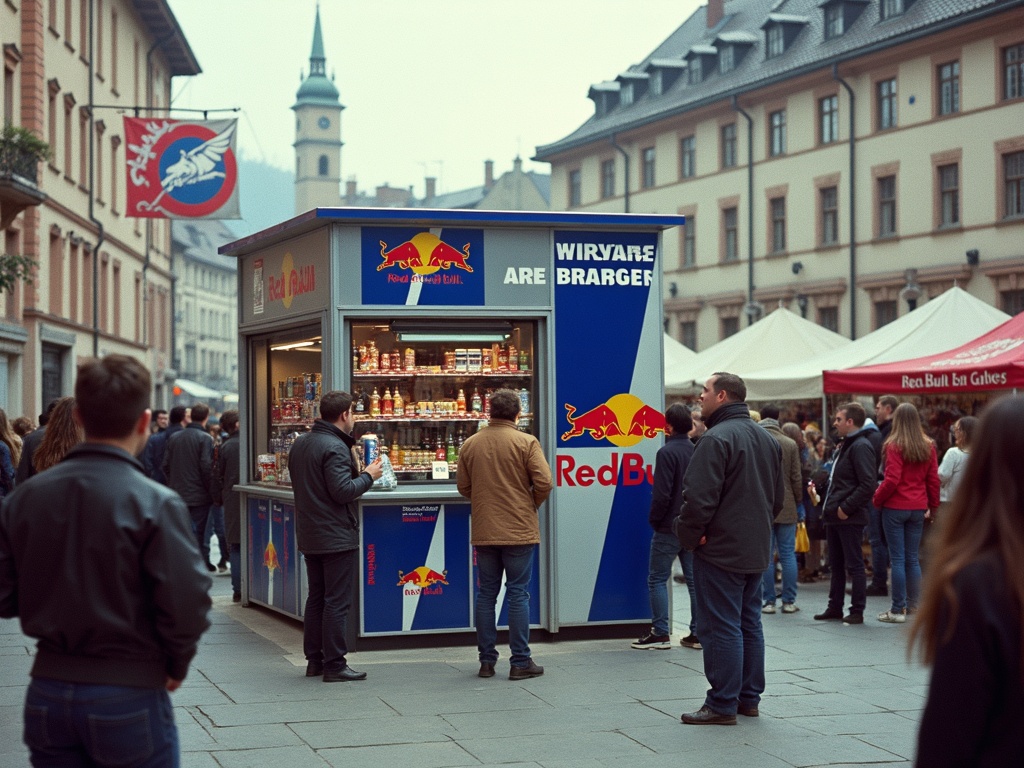
European Expansion and American Launch
Breaking Into European Markets
Red Bull’s journey beyond Austria began with Slovenia and Hungary in 1992, marking the brand’s first tentative steps into international territory. Germany presented a more challenging target when Red Bull attempted entry in 1994, facing intense regulatory scrutiny over its caffeine and taurine content. I found it fascinating how German authorities questioned these ingredients, which would later become standard in energy drinks worldwide. After persistent negotiations and regulatory compliance, Red Bull successfully launched in Germany, establishing a crucial foothold in Europe’s largest economy.
The United Kingdom became Red Bull’s next conquest in 1995, providing the brand with its first major English-speaking market in Europe. This strategic move proved instrumental for future expansion plans, as it demonstrated Red Bull’s ability to adapt its marketing message across different cultural contexts while maintaining brand consistency.
The American Breakthrough
Red Bull’s 1997 launch in Santa Monica, California marked a pivotal moment in the brand’s global expansion. Rather than investing heavily in traditional advertising campaigns, Red Bull pioneered what they called a “seeding” strategy that would revolutionize energy drink marketing.
The company’s approach centered on strategic sampling programs targeting specific demographics:
- College students during exam periods and late-night study sessions
- Athletes before workouts and competitions
- Nightlife communities at clubs and bars
- Extreme sports enthusiasts at events and competitions
The iconic Red Bull Wings Team became the face of this grassroots marketing effort, driving distinctive branded Mini Coopers to universities, gyms, and entertainment venues across America. These mobile brand ambassadors didn’t just distribute free samples—they created experiences and conversations around the product. I observed how this strategy built authentic connections with consumers rather than relying on traditional advertising messages.
This unconventional marketing approach proved incredibly effective in building Red Bull’s youth-oriented and performance-focused identity. Word-of-mouth recommendations spread rapidly across American college campuses, creating organic demand that traditional advertising couldn’t match. The strategy’s success demonstrated that sometimes the most powerful marketing comes from putting the product directly into consumers’ hands and letting them experience its effects firsthand.
Red Bull’s global expansion strategy from this period became a template that the company would later replicate in markets worldwide, proving that authentic engagement often trumps expensive advertising campaigns.
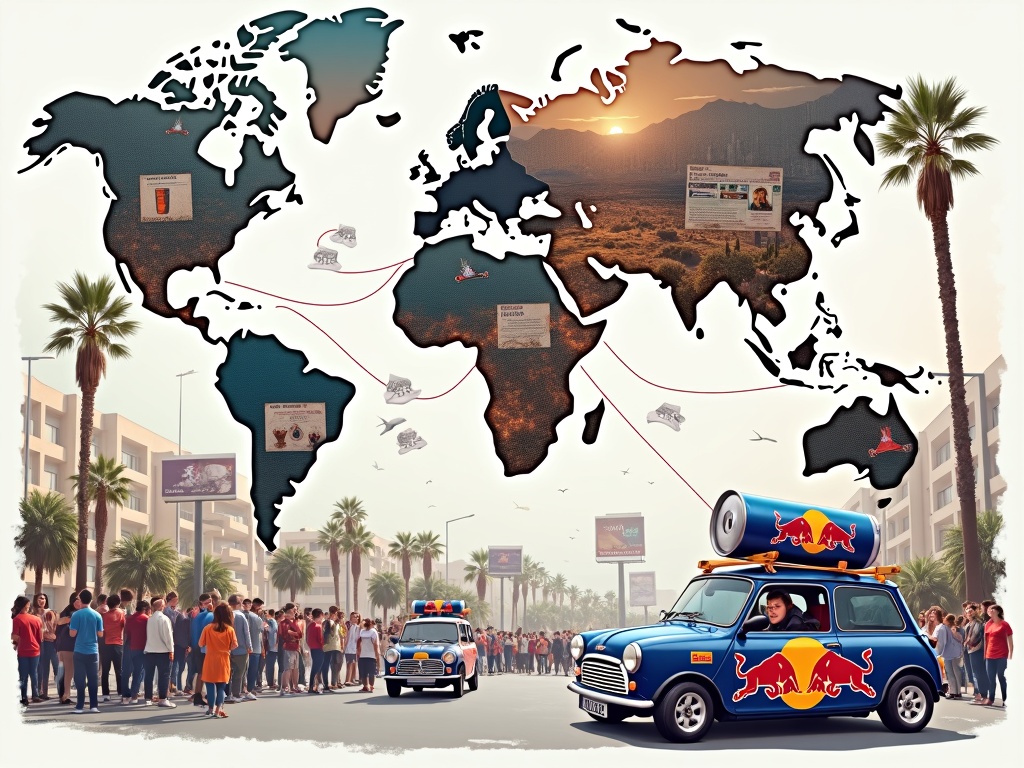
Global Domination and Market Leadership
From its initial Austrian launch in 1987, Red Bull transformed into a worldwide phenomenon that now spans continents. I’ve watched this brand evolve from a simple energy drink into an unstoppable global force that reaches consumers in over 175 countries. The numbers tell an impressive story of sustained growth and market penetration that few beverage companies can match.
Record-Breaking Sales Performance
Red Bull’s financial performance continues to shatter previous records year after year. In 2023, the company sold 12.138 billion cans worldwide, representing a significant increase from the 11.582 billion cans sold in 2022. This upward trajectory demonstrates the brand’s ability to maintain momentum in an increasingly competitive market. Since Red Bull’s global journey began, the company has achieved the remarkable milestone of selling over 100 billion cans worldwide.
In the crucial U.S. market, Red Bull maintains its leadership position with approximately 43% market share. This dominance becomes even more impressive when considering the fierce competition from established rivals like Monster and Rockstar, which continuously challenge Red Bull’s position through aggressive pricing and marketing strategies.
Evolution of Marketing Strategy
Red Bull’s marketing approach has undergone a dramatic transformation since its early days of simple free sample distribution. The company recognized early that traditional advertising wouldn’t capture the essence of what Red Bull represents. Instead, they pioneered a revolutionary approach that focuses on extreme sports sponsorships, creating authentic connections with their target audience.
The brand’s marketing evolution includes several key areas:
- Extreme sports partnerships with athletes in snowboarding, surfing, and cliff diving
- Music festival sponsorships that connect with younger demographics
- Esports investments that tap into the rapidly growing gaming community
- Global media ventures including Red Bull TV and content creation
- Adventure documentaries and event broadcasting that showcase human achievement
This strategic shift from product-focused advertising to lifestyle marketing has proven incredibly effective. Red Bull doesn’t just sell an energy drink; they sell an experience and a mindset. Their global expansion strategy consistently emphasizes cultural relevance and local market adaptation while maintaining core brand values.
The company’s transformation into a lifestyle symbol represents perhaps their greatest achievement. Red Bull has successfully positioned itself as more than just a beverage brand – it’s become a cultural movement associated with adrenaline, ambition, and pushing human limits. This positioning allows them to command premium pricing while maintaining customer loyalty across diverse international markets.
Their media empire now includes television programming, digital content, and live event coverage that reaches millions of viewers worldwide. These ventures don’t just promote Red Bull products; they create valuable content that audiences actively seek out. This approach generates multiple revenue streams while reinforcing brand messaging in subtle, engaging ways.
Red Bull’s success in maintaining market leadership while expanding globally demonstrates their understanding of local preferences and cultural nuances. Whether entering established markets or pioneering new territories, they adapt their approach while preserving the core brand identity that resonates with consumers seeking energy and inspiration.
The company’s ability to stay relevant across different generations and cultural backgrounds stems from their focus on authentic storytelling and genuine partnerships with athletes, artists, and content creators. This approach has created a sustainable competitive advantage that extends far beyond the beverage industry into entertainment, sports, and digital media sectors.
Product Evolution: Beyond the Original Can
Red Bull’s strategic approach to product development transformed it from a single-beverage company into a diverse portfolio brand. I’ve observed how the company carefully timed each launch to capture emerging consumer trends and dietary preferences.
Strategic Brand Extensions
The first major expansion came in 2003 with Red Bull Sugarfree, addressing growing concerns about sugar consumption while maintaining the original’s energy-boosting properties. This sugar-free alternative opened doors to health-conscious consumers who previously avoided energy drinks due to their high sugar content.
A decade later, Red Bull launched its Editions line in 2013, marking a significant shift toward flavor innovation. These fruit-infused varieties included:
- Watermelon
- Tropical
- Blueberry
- Dragon Fruit
These new flavors appealed to consumers who wanted the functional benefits of energy drinks with more appealing taste profiles. The global expansion strategy supported these new flavors, allowing different regions to embrace variations that suited local preferences.
Targeting Diverse Consumer Segments
Red Bull Zero emerged as another calorie-conscious option, specifically designed for consumers who wanted both sugar-free and zero-calorie alternatives. This product filled a crucial gap in the market, particularly among fitness enthusiasts and dieters who counted every calorie.
The company’s boldest move came in 2018 with ORGANICS by Red Bull, a completely separate line of natural premium soft drinks. Unlike traditional energy drinks, these organic beverages targeted consumers interested in natural ingredients and premium positioning. I consider this launch particularly strategic because it allowed Red Bull to enter the organic beverage market without diluting its core energy drink brand identity.
Each product extension served specific demographic segments:
- Athletes gravitated toward the sugar-free options for sustained energy without blood sugar spikes.
- Flavor-seekers embraced the Editions line for variety and taste enhancement.
- Health-conscious consumers appreciated the organic alternatives and zero-calorie options.
The timing of these releases reflects Red Bull’s understanding of market evolution. Since its US debut, the brand has consistently anticipated consumer needs before competitors could establish strong positions in emerging segments. This proactive approach ensured Red Bull maintained its market leadership while expanding beyond its original blue and silver can into multiple product categories that serve diverse lifestyle preferences and dietary requirements.
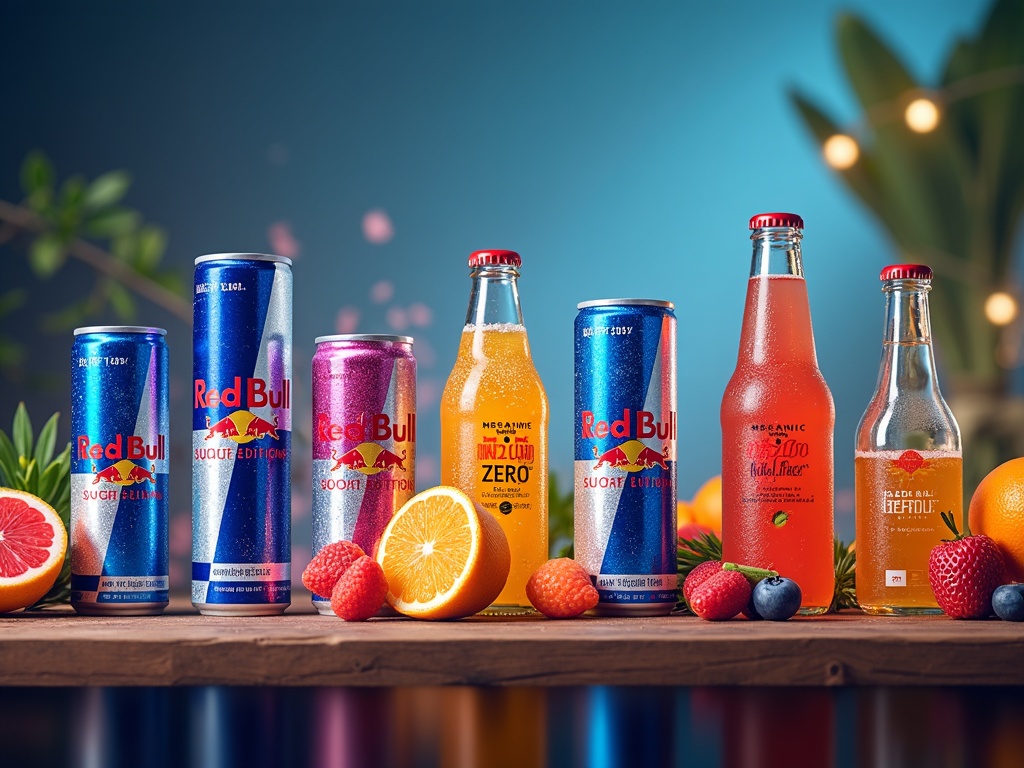
Marketing Genius: Creating a Lifestyle Brand
Red Bull transformed energy drink marketing by abandoning traditional advertising methods and embracing event-based strategies that captured hearts and minds. I’ve watched this brand consistently focus on extreme sports, motorsports, and death-defying aerial stunts that align perfectly with their high-energy message. This approach created authentic connections with consumers who live for adrenaline and adventure.
The company’s strategic expansion relied on what I call their ‘beachhead strategy’ – systematically conquering one market before moving to the next. This methodical approach ensured consistent growth without overextending resources or diluting brand impact. By entering the US market strategically, Red Bull established strong foundations that supported their eventual global dominance.
Beyond Sponsorship: Total Brand Integration
Red Bull’s commitment extends far beyond simple sponsorship deals. The company owns and operates professional sports teams across multiple disciplines, including Red Bull Racing in Formula 1, RB Leipzig in Germany’s Bundesliga, and New York Red Bulls in Major League Soccer. These investments demonstrate complete brand integration rather than surface-level marketing partnerships.
Their media division produces compelling films, documentaries, and global broadcasts that strengthen Red Bull’s identity as a content-driven powerhouse. This strategy positions them as entertainment creators rather than just beverage manufacturers, building deeper emotional connections with audiences worldwide.
The 2012 Red Bull Stratos project exemplified this approach perfectly. Felix Baumgartner’s supersonic space jump generated over 8 million live viewers and hundreds of millions of global impressions, creating one of the most memorable marketing moments in history.
I consider this project the pinnacle of experiential marketing – combining human achievement, technological innovation, and brand storytelling into one unforgettable spectacle.
Red Bull’s success stems from understanding that modern consumers don’t just buy products; they buy into lifestyles and identities. Through bold storytelling and consistent brand alignment across all touchpoints, the company redefined how beverages can embody energy, daring, and innovation. Their global expansion strategy continues to leverage these same principles, adapting their extreme sports focus to different cultures while maintaining core brand values.
This marketing genius lies in Red Bull’s ability to make their brand indispensable to the very communities they serve. Whether it’s supporting local extreme sports athletes or creating distribution partnerships that understand regional preferences, Red Bull consistently delivers experiences that go far beyond caffeine and taurine.
Sources:
Red Bull Corporate Website – “The History of Red Bull”
Forbes – “How Red Bull Makes Money”
Bloomberg – “Red Bull GmbH Company Profile”
Statista – “Red Bull’s Global Sales Volume from 2011 to 2023”

